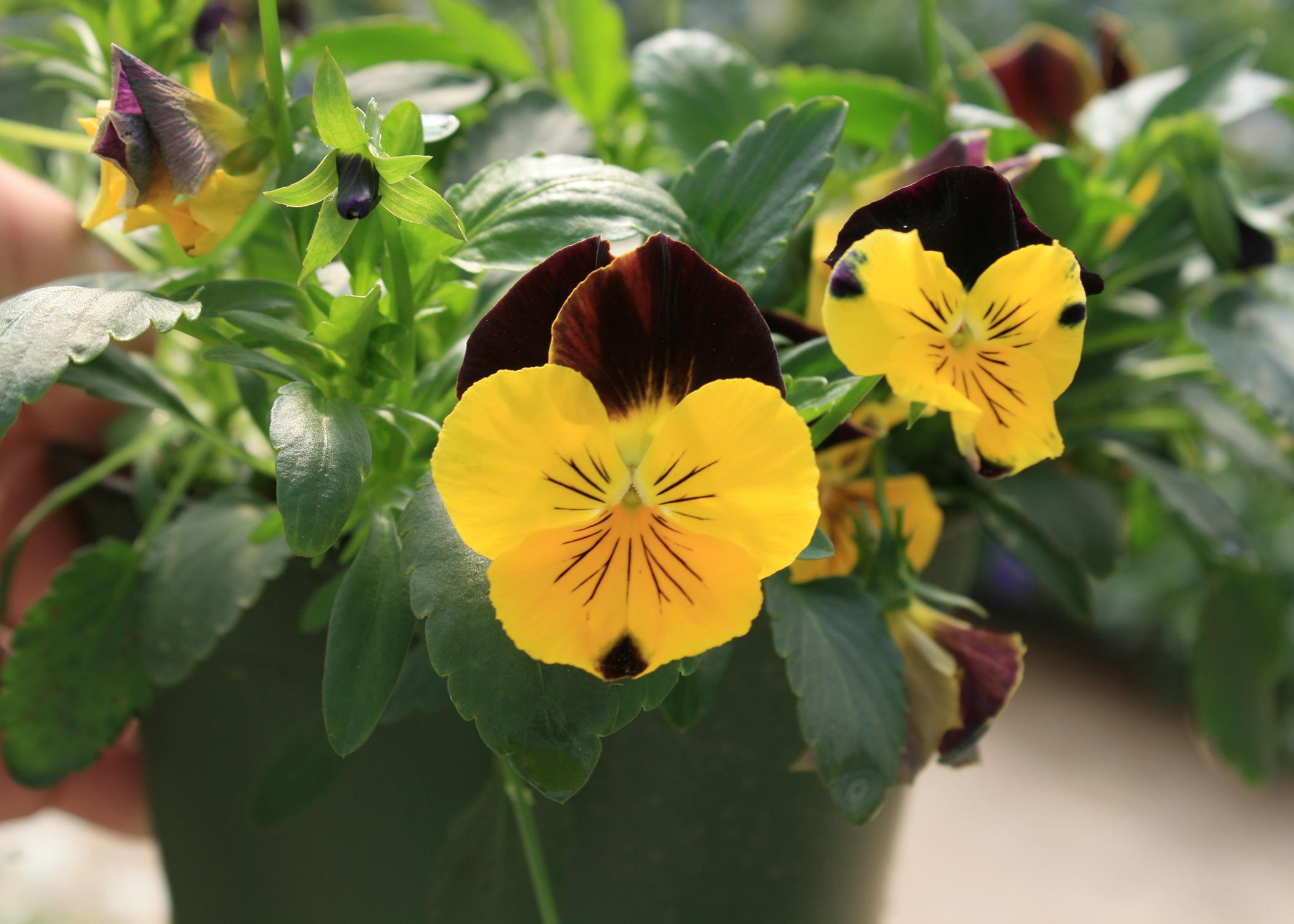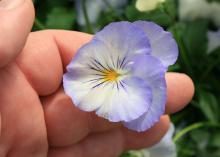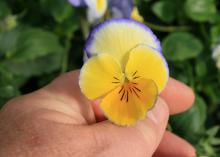Information Possibly Outdated
The information presented on this page was originally released on December 1, 2014. It may not be outdated, but please search our site for more current information. If you plan to quote or reference this information in a publication, please check with the Extension specialist or author before proceeding.
Cool Wave pansies bring cheer to winter gardens
I don’t keep it a secret that I think pansies are the perfect plants for cool-season annual beds. They are really easy plants to grow, and they provide great color during cold winters.
The Matrix pansy is always a great choice because of the way it displays flowers high above its foliage. But lately I’ve been admiring the unique trailing growth habit of Cool Wave pansies.
Cool Wave pansies are much more vigorous than the standard pansy varieties. These plants are well branched and can fill a landscape bed or hanging basket with good color from fall all the way to next spring. The Wave in the name may sound familiar to those who grow petunias in the summer. Cool Wave pansies were developed by the same folks who brought the popular Wave petunias to many of our gardens.
There is quite a selection of attractive Cool Wave pansy colors to go along with traditional white, yellow and purple. There is Violet Wing, with its happy duo of white and elegant, velvety, deep purple; Frost, with its abundance of white flowers lightly shaded lavender-blue; Blueberry Swirl, with plentiful yellow-faced flowers surrounded by baby blue; and my favorite, Sunshine ‘n Wine, a bright, sunny yellow with mellow burgundy wings and accented flowers. All these flowers have whisker lines radiating from their centers, resembling delicate artist brushstrokes.
Cool Wave pansies are well suited for growing in combination containers as the spiller plant. Try combining them with Ruby Streaks or Red Giant mustard as the thriller and Montego dwarf snapdragon or Telstar dianthus for colorful fillers.
I am particularly impressed with pansies’ cold tolerance in the garden and landscape. The Cool Wave trailing pansies are hardy through U.S. Department of Agriculture’s Zone 5, so they are well adapted for all of Mississippi. During really cold weather, these plants will appear to freeze, but when temperatures moderate, the plants will have only minor damage.
The most visible effect of extreme cold weather will be some purpling of the foliage. Although any flowers open during these very low temperatures will be goners, the flowering will return very quickly with warmer weather.
The fall and winter months can be dry, and it is important to maintain consistent moisture for pansies. Many gardeners don’t realize that all pansies are heavy feeders and will stop flowering if nutrition gets too low. Apply a water-soluble fertilizer every couple of weeks to maintain good plant growth.
Cool Wave trailing pansies need to be grown in at least six hours of full sun each day for the best flowering and growth.
Choose a color you like and plant them today to enjoy until spring.





